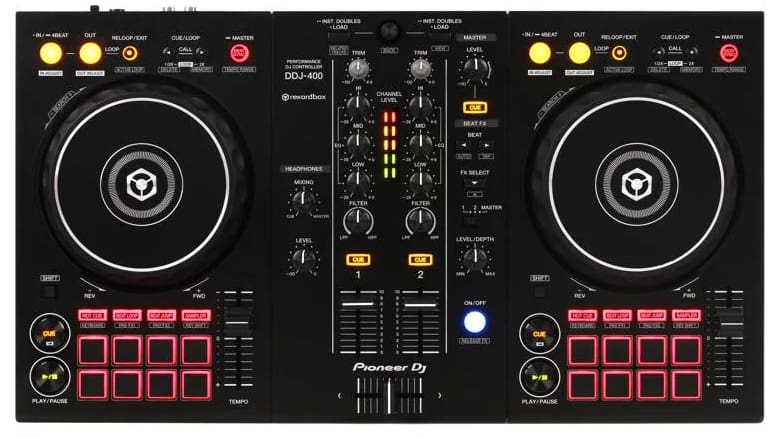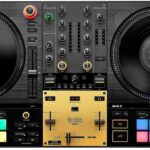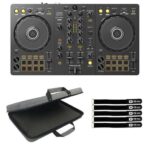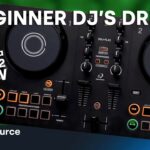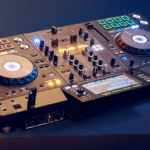Pioneer DJ’s DDJ-400 stands out as a top choice for beginner DJs in 2025, offering a club-standard layout and essential features for skill development. Discover whether it delivers genuine value or falls into the gimmick category compared to the SB3 and RB.
DDJ-400 Review: Is It the Best Beginner DJ Controller in 2025?
For aspiring DJs, choosing the right beginner controller is crucial. With Pioneer DJ’s DDJ-400, SB3, and RB vying for attention, many wonder if the DDJ-400 is a genuine leap forward or little more than marketing hype. This editorial review breaks down the redesign, features, and value proposition of the DDJ-400 while comparing it to its closest rivals.
The Club-Ready Redesign
One of the DDJ-400’s headline features is its club-standard layout. Pioneer DJ specifically aimed to match the workflow found on festival and club setups, notably the CDJ-2000 Nexus and DJM-900 Nexus mixers. Unlike SB3 and RB, the DDJ-400 positions its FX buttons, loop controls, and performance pads just like high-end Pioneer units. This seamless progression means beginners who practice at home on a DDJ-400 will feel at home behind professional rigs.
Why Does Pioneer Care About Club Familiarity?
Most beginners eventually aspire to play in clubs or festivals. When they transition to flagship gear, unfamiliar layouts can hinder performance. The DDJ-400’s key buttons, loop sections, and overall ergonomics mimic pro gear, making the learning curve far less steep when DJs upgrade. The SB3 and RB, by contrast, use more generic layouts, which can leave DJs unprepared for the shift to higher-tier equipment.
Feature Breakdown: DDJ-400 vs. SB3 and RB
What truly sets the DDJ-400 apart from its older siblings?
- Extended Tempo Fader: The DDJ-400 provides a longer tempo fader, which translates to more precise manual beatmatching. For DJs who want tight, hands-on control, this improvement leads to cleaner mixes and better timing.
- Beat In/Out Looping: Interlooping is made easier thanks to dedicated beat in and out features. This is crucial for workflows involving loop-based mixing, giving users finer control over transitions.
- 1/2x and 2x Loop Size: Advanced loop controls, allowing DJs to instantly double or halve loop lengths, make creative performance more accessible and add flexibility during live sets.
While SB3 and RB offer baseline functionality, these subtle but important enhancements make the DDJ-400 more feature-rich and closer to professional rigs.
Software Compatibility: Rekordbox Reigns
Pioneer’s DDJ-400 ships bundled with Rekordbox DJ, a full-featured professional-grade software suite. Unlike Serato DJ Lite (which comes with SB3), Rekordbox unlocks advanced features without extra cost. You’ll have:
- Access to all core mixing features
- Customizable effects and loops
- Direct upgrade path to Rekordbox Pro and cloud services
For beginners who want depth and longevity from their controller, the DDJ-400’s software support is a major selling point.
Value for Money and Upgrade Path
All three controllers (DDJ-400, SB3, RB) are typically priced around $250, making cost less of a differentiator. However, the RB is now several years old and being phased out, which tilts the value equation. If you’re buying new and intend to get the most current training and support, the DDJ-400 is the logical choice. For those who already own an RB or SB3, there’s little reason to upgrade unless you specifically want the club-standard layout.
Should Existing SB3 and RB Users Upgrade?
No—these controllers are fundamentally similar, aimed directly at beginners. The DDJ-400’s handful of extra features are useful, but not enough to warrant a switch from another entry-level Pioneer controller. Advanced DJs or those wanting a significant upgrade should look forward to the rumored DDJ-800 and beyond.
Buying Second-Hand: Smart Moves for Budget DJs
With the DDJ-400’s release, second-hand RB and SB3 units are hitting shelves at lower prices. For those truly on a budget, a gently used RB or SB3 can offer great value without much compromise in functionality. Expect marginal price drops, but note that newer models often maintain higher resale values due to ongoing support and software compatibility.
Build Quality and Downsides
While the DDJ-400 excels in layout and usability, it’s important to note its plasticky build and lighter weight. This can make the unit feel less premium and may affect perceived durability, but it’s consistent with the price bracket. The compact pitch fader might challenge absolute beginners at first, and you can only apply one effect per deck simultaneously, which limits the level of creativity for some users.
Final Verdict
For 2025, Pioneer DJ’s DDJ-400 stands as the club-standard entry point for new DJs. Its redesigned layout, advanced loop and tempo features, bundled Rekordbox software, and consistent price point leave little reason to look elsewhere for a first controller. While not perfect—especially in terms of build quality—its strengths in workflow and software integration make it the top pick over the SB3 and RB for those starting out.
What Should You Do?
- Want full Rekordbox support and club-standard training? Buy the DDJ-400.
- Already own SB3 or RB? Stick with your controller unless you need the upgrades offered by the DDJ-400.
- Shopping used? Consider RB and SB3 for even more value as prices drop.
Ultimately, experience will be shaped more by practice than by subtle controller differences. Whether starting out on the DDJ-400 or learning on a second-hand SB3, the essentials are in place to build core DJ skills.
Let us know in the comments if the DDJ-400 is on your wish list, and what you’d like covered in our next tutorials!


